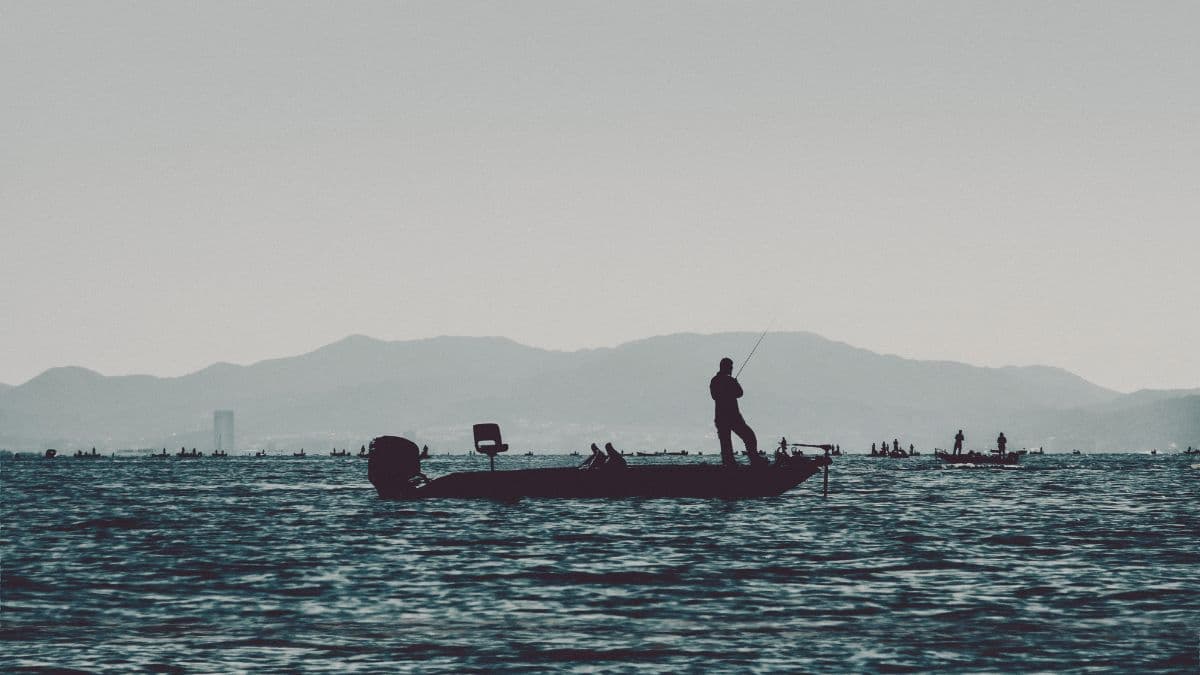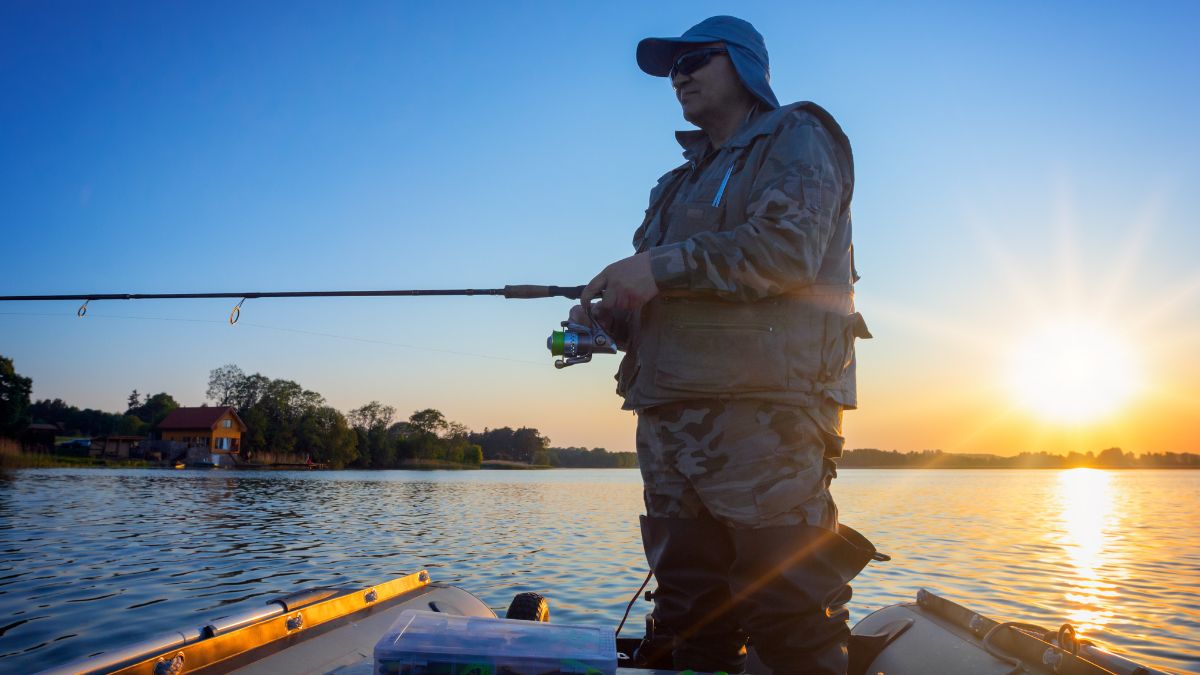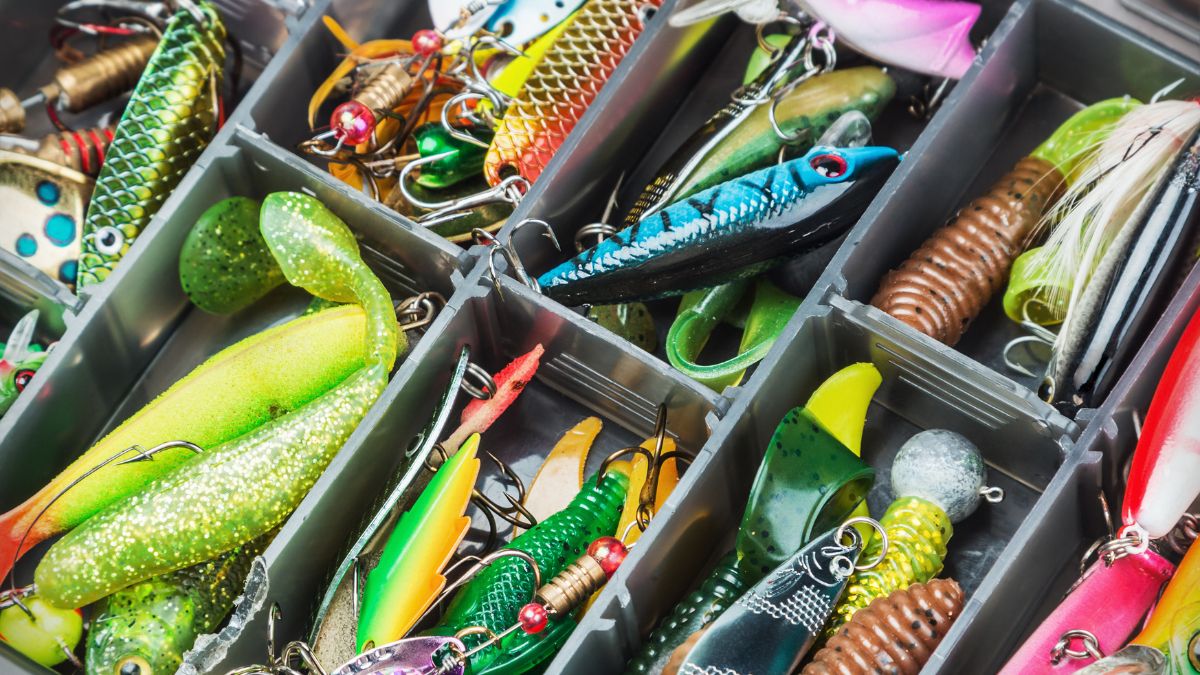Bass anglers know that the weather plays a significant role in the success of their fishing trips. Identifying the best weather for bass fishing can significantly improve an angler’s chances of reeling in largemouth and smallmouth bass.
Understanding the relationship between weather conditions and bass behavior is key to success.
Cooler temperatures lure bass into shallower waters during early morning and late evening. Overcast days with cloud cover or light rain are also considered prime conditions, as these factors keep bass near the water’s surface.
A bass angler should take advantage of these cooler water periods, utilizing soft plastics, jerk baits, and topwater lures for maximum success.
When cold fronts move in, or heavy rain disturbs the water, bass tend to retreat to deeper water to seek refuge.
In these situations, anglers should explore depths with Carolina rigs or deep-structure lures. Monitoring barometric pressure shifts may also provide helpful information for adjusting fishing techniques and adapting to variations in water temps and bass movement throughout the day.
The Impact of Weather on Bass Fishing

Temperature’s Effect on Bass Behavior
The behavior of both largemouth and smallmouth bass is greatly influenced by water temperature. In cold weather, bass tend to move to deeper water where it’s warmer.
As water temps rise, they will move to shallower waters for food and suitable spawning areas. In summer, bass may seek cooler water in deeper sections or shaded areas.
During the early morning, bass are usually found in shallow water, feeding on smaller fish. Soft plastics, jerk baits, and topwater lures entice an early morning bite.
As the day progresses, bass move to deeper water to escape the sun’s heat, making lipless cranks and deep structure fishing more effective. Bass may return to the shallower waters in the late afternoon and evening.
Wind, Clouds, and Rain: Blessings or Curses?
Wind can create waves and stir up the water, making it less clear and creating better fishing conditions for bass.
Windy days can cause baitfish to gather in specific areas, and hungry bass will follow with them. Casting a spinner bait or crankbait on the water’s surface on a windy day can yield great results.
Cloudy days and overcast skies can also be a blessing for a bass angler. Cloud cover reduces light penetration, making bass feel more secure and encouraging them to enter shallower waters.
They are more likely to bite under such conditions. Topwater baits, soft plastic baits, and buzz baits are some of the best options for cloudy conditions.
Light rain can also benefit bass fishing, as it breaks up the water surface, making it harder for bass to detect anglers above.
Heavier rain, however, can cause muddy water and runoff, making fishing more challenging. In heavy rain, bass may move to deeper water or areas with stable water clarity, making a Carolina rig or football jig a suitable tactic.
Barometric Pressure and Bass Activity
Barometric pressure can have a profound impact on bass behavior. A rise in barometric pressure, indicating stable weather, can encourage bass to feed more actively and move to shallower water.
On the other hand, a sudden drop in pressure due to an approaching cold front or storm can make bass more lethargic and less likely to bite.
Weather changes, especially storms, can alter the water level and create oxygen-rich conditions, encouraging bass to move towards open water actively. Bass anglers should note rising pressure and target shallow areas when weather conditions improve.
Fishing Guide: What’s the Best Barometric Pressure for Bass Fishing?
Bass Fishing Through the Seasons

Best Techniques for Spring
Water temperature and weather conditions play a crucial role in bass behavior in spring. As water temps rise, largemouth and smallmouth bass move to shallower waters for the spawning season. Typically, the best weather for bass fishing during this time is after a warm front stabilizes.
Ditch deeper water techniques to capitalize on bass activity in the shallower waters and opt for soft plastics, jerk baits, and lipless cranks.
Weather conditions like light rain and cloudy days can increase success for bass anglers during early spring. The best bet is to focus on early morning and late afternoon fishing.
Maximizing Your Summer Bass Haul
As water temperatures increase during the summer months, bass tend to seek deeper water structures.
Hot weather can make bass lethargic, so focusing on deeper water in the middle of the day can be essential for success. The water’s surface can be very warm, so it’s best to target connections to deep structures during this time.
Bass anglers should use deep water techniques like Carolina rigs and football jigs, which are most effective when targeting bass in cooler water.
Cloud cover or windy days can create opportunities in shallower waters by reducing water clarity. Soft plastic baits, spinner baits, and topwater lures are good choices during these conditions.
Capitalizing on Fall Opportunities
Fall brings changing weather conditions and cooler water temperatures. The bass feeding behavior shifts as they prepare for the colder months. They move from deep water back to shallower waters. This can be a great time for bass anglers to capitalize on big bass opportunities.
In early fall, focus on fishing during overcast days, as the reduced light helps bass behavior mimic the early morning and late evening. Soft plastic, buzz baits, and topwater baits can be effective during this time.
As the water cools, fish species like largemouth and smallmouth bass become more aggressive. In the late fall, switch to blade baits, soft plastics, and lipless cranks. Focus on fishing during cloudy conditions and light rain, as these weather changes can increase the bass bite.
Effective Techniques and Baits for Each Weather Condition

Spinnerbaits in Windy Weather
Windy days can be a great time for bass anglers to target shallow water with spinnerbaits. The wind disturbs the water’s surface, which can trigger aggressive feeding behavior from largemouth and smallmouth bass.
Utilize a heavier spinnerbait to cover more water and maintain control in windy conditions. The choppy water also helps reduce water clarity, which can benefit bass anglers using spinnerbaits.
On windy days, try focusing on areas such as points, flats with grass, or lily pads where bass might be holding in shallower waters.
Cold Front Crankbait Strategies
Cold fronts typically change barometric pressure and colder water temps, influencing bass behavior and potentially making them more lethargic. When cold fronts arrive, bass often move to deeper water for more stable conditions.
Fishing with crankbaits targeting deeper water can be an effective strategy in these situations. During cold weather, slow down your retrieve and prioritize natural shad patterns on lipless or deep-diving cranks to entice strikes from big bass in deeper water.
Jigs and Jig Techniques for Overcast Days
Overcast days can be ideal for bass fishing since the cloud cover and low light conditions can encourage bass to stay shallow and feed more actively. Utilizing jigs is a great way to target bass on these cloudy days.
Football jigs can be especially effective when fished around deeper structures and cover while flipping or pitching jigs can be perfect for shallow water and dense vegetation. Vary your retrieve and pay attention to the bass’s reaction to determine the best jig technique for each situation.
Utilizing Soft Plastics for Lethargic Fish
When bass feel lethargic due to cold weather, heavy rain, or changes in water level, they are less likely to chase after fast-moving baits. In these circumstances, soft plastics can be the key to success. Some popular options include worms, flukes, and soft swimbaits.
Rig them up using a Carolina rig or wacky rig to target bass suspended in the water column and fish them with a slow, methodical approach for the best chance at enticing a strike.
Windy days are perfect for spinnerbaits in shallow water, while cold fronts call for crankbaits fished in deeper water. Overcast days are an opportune time to employ jigs, and soft plastics can be highly effective for targeting lethargic fish in various conditions.
Fishing Guide: Does Time of Day Matter When Ice Fishing?
Key Fishing Locations Impacted by Weather
Targeting Shallow Water in Rising Temperatures
During warmer months, like late spring and early summer, bass often move from deeper to shallower waters. As water temperatures rise, the bass behavior changes.
Largemouth bass and smallmouth bass tend to become more active in these conditions, seeking out areas with soft plastics and grass beds.
The water’s surface provides safe cover for small fish, providing opportunities for hungry bass to feed. Early morning and late evening are typically the best time of day to target shallower waters.
When water temps increase during hot weather, largemouth bass can be found in shaded areas, under lily pads, and docks. Similarly, smallmouth bass like to stay near underwater structures, such as drop-offs and points, where they can find cooler water and abundant prey.
When to Seek Deeper Water
In colder months, bass often move to deeper water to find more stable temperatures and better access to prey. Targeting deeper water during cold fronts and barometric pressure drops is essential for bass anglers seeking big bass bites.
In cold weather, use football jigs, blade baits, or lipless crankbaits to attract bass in deeper water structures. Deeper water is also an excellent location for Carolina rig fishing.
Cold fronts tend to have a significant impact on water temperatures and bass behavior. As the water temperature drops, bass move from shallow to deeper water in search of warmer temperatures and stable water conditions. During heavy rain and muddy water, bass often seek out deeper water.
Using Structures and Cover to Your Advantage
Bass are known to prefer areas where they can find ample cover and structure. When looking for the best fishing locations, target areas with good living and hunting conditions for bass. A few examples of ideal structure are:
- Grass beds
- Docks
- Drop-offs
- Underwater rock formations
During overcast days, cloudy conditions, or low light periods like early morning, late afternoon, and night fishing, bass may venture further from their usual hiding spots for feeding. Topwater lures, buzz baits, or jerk baits can be beneficial during these periods.
In clear water conditions, bass can move to deeper depths and seek structures farther from the shoreline, as they can see better and are less reliant on cover. Deep structure and open water habitats are prime locations during times of high pressure and sunny days.
By adapting their fishing tactics to suit varying weather conditions and locations where bass can be found, anglers can maximize their chances for a successful fishing trip. Remember these tips the next time you plan your bass fishing adventure.
Fishing Guide: Largemouth Bass Fishing Tips – 8 Tips That Work
Frequently Asked Questions
Optimal bass fishing temperature?
The optimal bass fishing temperature range for large and smallmouth bass is between 55-75°F (13-24°C). During these temperatures, bass are more active and feed more frequently.
In warmer water temperatures, bass head to deeper water to stay cool, while in cooler water temperatures, they tend to stick to shallower waters.
How does barometric pressure impact bass?
Barometric pressure plays a significant role in bass behavior. High pressure often results in clear water and bass moving to greater depths, while low pressure due to heavy rain or cold fronts may force bass to shallower waters.
Bass anglers should monitor barometric pressure changes to determine the best times and locations for fishing.
Best months for bass fishing?
The best months for bass fishing vary depending on location and species. In general, early spring to late autumn provides the best opportunities for catching largemouth and smallmouth bass, with the spawning season during late spring and early summer is particularly good.
Fishing in 40 degree weather?
Fishing in 40°F (4°C) weather can be challenging, but not impossible. In cold water, bass tend to become less active and move to deeper water for warmer temperatures. Using slow-moving baits like football jigs or blade baits in deeper water might provide better chances of a successful catch.
High-pressure effect on bass?
High pressure often leads to favorable weather conditions like clear skies and sunny days. However, it also results in bass moving to deeper water, making them harder to catch.
Anglers should consider using deep structure techniques or fishing in areas with deep cover if targeting bass during high-pressure periods.


Cory Haasnoot
Cory is a content writer-editor and founder of Tackle Box Talk. Favorite Quote: "Give a man a fish, and you feed him for a day. Teach a man to fish, and you feed him for a lifetime."